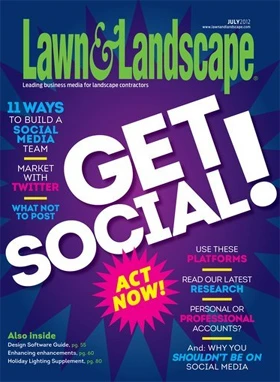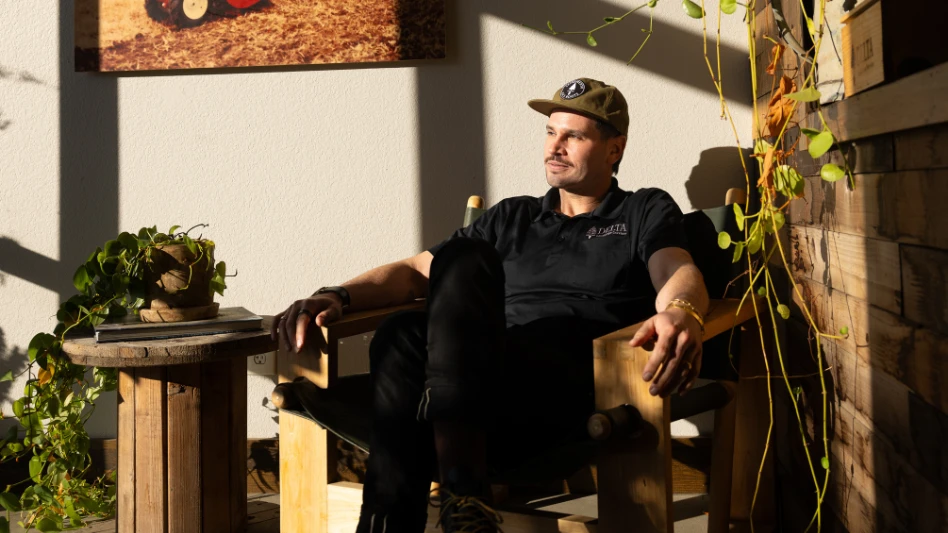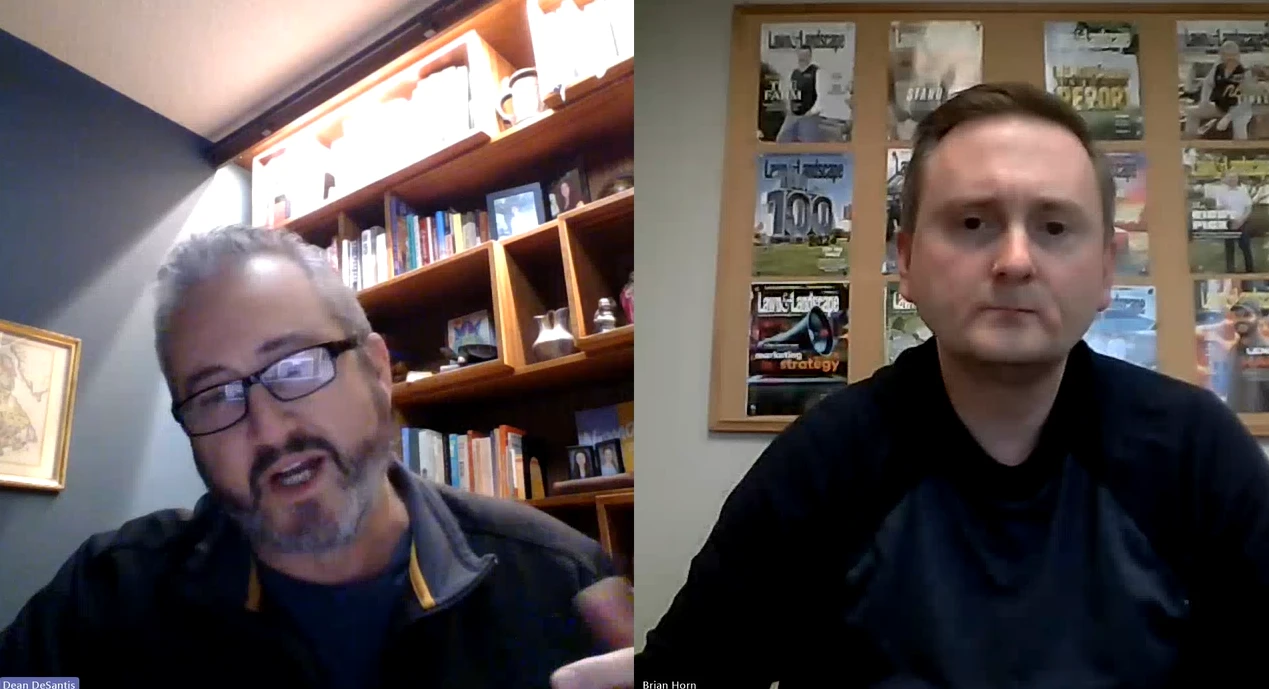
What it takes to build a social media team
11 guidelines for engaging your employees in your social media marketing.
By Chris Heiler
Many companies in the green industry are beginning to embrace the idea of using what is commonly referred to as an “online community manager.” This could be an in-house employee, outside consultant or agency.
Responsibilities can range from website development and search engine optimization (SEO) to content creation and social media management.
As time goes on, this community manager role is going to become more and more critical within our organizations. It will also become more difficult for a single person to manage as technology continues to evolve at a rapid pace. Even more importantly, the need for real-time participation will be an absolute requirement of you. The big brands of the world have already learned this. Green industry businesses will eventually have to come to grips with the idea that business is 24/7, and not 9 to 5.
Because of this, I advocate a team approach to managing your company’s online presence.
Below are 11 guidelines to follow when building an internal team that will contribute to your company’s online presence and social media efforts.
1. Ask for help, don’t demand it. As you know, not everyone is into social media or active online. That’s perfectly fine. Don’t demand anything of these people. You’ll only get pushback.
You want enthusiastic people who are genuinely interested in social media and how it can help your business. Of course, it doesn’t hurt if these folks are tech-savvy as well.
You don’t need every employee on board with your efforts. Find the few who are truly interested in exploring what social media can do for your business.
2. Set your company’s organizational chart on fire. A person’s position in your company, or their experience, should not be a factor in selecting your team. Why does the CEO or vice president need to be involved if they have absolutely no interest in social media? They shouldn’t. At the same time, why would you exclude someone near the bottom of your organizational chart if they truly want to help your social media efforts?
Shayne Newman, president of Yardapes in New Milford, Conn., recently shared with me that one of his H-2B workers is a Facebook fanatic, constantly sharing images and videos of the landscape work they are doing on his personal Facebook profile. Make this guy a part of your social media team right now!
And, please, do not play the age card. That college grad or high school kid you just hired doesn’t automatically qualify as a social media expert. Nor does she necessarily want to help in your efforts. On the flip side, don’t underestimate or disqualify someone because they are over the age of 40 (that’s an arbitrary number, folks). Age has nothing to do with enthusiasm and the willingness to help your business.
3. Include voices from all departments. My personal background is in landscape design and construction, so I naturally gravitate toward design/build topics. I’m not as well informed when it comes to lawn care, tree care, irrigation or a half dozen other green industry topics or services.
Your company can’t have gaps in the topics you cover and content you create. Having voices from each department within your company enables you to tell a complete story about your company.
At Neave Group Outdoor Solutions in Wappingers Falls, N.Y., we’ve created a team that keeps me updated on everything happening in the company from community events to seasonal maintenance considerations to unique projects they are currently working on. The team gives me the information I need to tell an accurate story about Neave Group.
4. Explain why social media is important to your company and why you want your people to play a critical role. This can be a tough one because many business owners don’t fully understand how social media positively impacts their business and bottom line.
But in order to get your people fully invested in your initiatives, you better be able to sell them on why exactly you are doing this, and why you want them to play an important role.
5. Clearly outline your objectives. Everyone within your company who is involved in your social media efforts needs to be shooting at the same target. What are the big-picture objectives and specific goals you are trying to achieve?
Is the objective to build customer loyalty or to drive direct sales? Is the objective to build brand awareness within a specific geographic area? These are three very different objectives that require unique strategies.
Your people need to understand your social strategy and what you are trying to achieve.
6. Give your people an incentive to participate. As I mentioned above, don’t demand that your people participate in your social efforts--you’ll only get push-back. You want people on board who truly want to help. And when you find these folks you need to reward them. I suggest creating a formal rewards program.
We’ve put a program in place at Neave Group that provides an incentive to actively participate and keeps our team motivated, invested and informed (Neave employees are rewarded for creating engaging content like blog posts as well as sharing pictures).

7. Give your team the tools to succeed. Would you send your crews out each day without the proper tools and equipment to complete the job? Of course not. Would you let an inexperienced laborer build a patio without the proper training? I sure hope not.
You need to give your social team every opportunity to succeed. This means providing them with the organization, systems, training and tools they are going to need to be effective. You can’t simply ask your employees to take pictures for you, or write a blog post, or tweet for the company without giving them the proper tools and instruction. You need to enable them by making the process as frictionless as possible.
8. Provide your team with oversight. Whether you keep it in-house, hire an independent consultant or retain an agency, someone needs to be held responsible for providing oversight. Remember, this is a team you’re putting together. And all successful teams have a coach roaming the sideline calling the shots.
You will need one person in charge of keeping your social media program organized and running smoothly.
9. Start small, then build on success. Your social team might start out with two employees managing your company Facebook page. Then, perhaps, six months later, you add another member to the team who manages your company Twitter account. This is perfectly acceptable.
It’s best to start any program slowly and build on your successes. Gain some momentum with one initiative like a Facebook page or blog before jumping into something else.
10. Set expectations, but let your people fail and make mistakes. We are just at the tip of the iceberg when it comes to social media. No one in the green industry has this completely figured out. Let your team experiment and try out new ideas, programs and plans.
It’s important to let them have some fun. This is how you keep them engaged.
But, at the same time, set expectations for your team. I recommend introducing a “two strike” rule for team members.
One inappropriate photo or status update, not a big deal. But make the same mistake twice and you’re off the team.
11. Keep your team updated. You must maintain your team’s interest and engagement if you want your social media efforts to pay off. You need to keep them updated by sharing your successes with them.
Has your website traffic increased significantly since putting together your social team? Is your blog generating more qualified leads? This progress needs to be shared with your team.
We maintain a monthly Leaderboard for Neave Group’s social team which tallies each team members’ contribution for the month. Not only does this keep the team updated, it creates competition that drives more participation.
A single person cannot effectively manage your company’s social media and online marketing efforts without strong support internally. Engage your employees in your efforts and empower them to tell a compelling story about your business.
Chris Heiler is the founder and president of Landscape Leadership. Visit www.LandscapeLeadership.com to learn more.
Be yourself
Social experts Jason Cupp, Paige Worthy and Jess Ostroff come together to discuss what to share and what to keep to yourself when it comes to social media.
By Lyndsey Frey
Online personalities and social experts Jason Cupp, Paige Worthy and Jess Ostroff have been online since the very beginning – before the term, “social media,” was even coined. They reminisce about the good ‘ole days when Prodigy online services were a hit and Facebook was made available across their college campuses.
Some of you probably know Cupp. He’s been in the landscape industry for more than 20 years, starting out with just a lawn mower back in high school. Now, as a Kolbe Certified growth consultant, team-building expert and motivational speaker, he consults with some of the biggest companies in the landscape industry.
Worthy is a freelance writer, blogger and all-around social junkie with experience in the green industry’s retail sector.
And, finally, Ostroff is somewhat of a digital nomad working from various locales as a virtual assistant for some of the biggest names in the social media universe. Plus, she recently launched, Don’t Panic Management, a creative management company that specializes in niche genres.
Chris Heiler brought these three unique personalities together recently to discuss adding authenticity, while blending personality and fun when it comes to social media.
What is your personal approach to social media?
Cupp: I’ve always believed in the merging of the worlds. I really don’t have a lot of lines between what I do personally and what I do professionally. I prefer to express the fact that I’m going to dinner here, or on vacation there, and in the same token, talk about business practices and principles that drive my core business.
There’s no replacement to personal relationships. But to add that authenticity and who you are personally to your online presence, I do believe allows you to get to know people better in ways you wouldn’t normally do when you’re sitting face to face.
Ostroff: I really believe that people strive for personal connections in any way, which is why I think it’s important for us to share (personal things) because people just want to connect and find some way to relate to other people.
I use different networks for different things. I don’t like to be friends with people on Facebook that I haven’t met or don’t have at least a pretty good relationship with them in real life. I just feel like it’s more personal. There are certain things I don’t share on Twitter that I might share on Facebook. Not because I’m worried about people seeing it, it’s just a different audience. My Twitter account has more professional connections than my Facebook account.
Any topics off limits?
Cupp: I do think about it, but I wouldn’t say that I have a topic that’s offline. I will touch politics, religion, the economy, but I do pay attention to what I’m (writing). I will put anything up that I’m thinking about. Sometimes it has gotten me in a little bit of trouble, but at the end of the day, I believe that authenticity and transparency is critical to develop who I am in those who may be paying attention to what I say.
Worthy: I don’t really have limits to what I’ll talk about. But that sure has come back and bitten me in the butt. I dealt with it about a year ago and again a few months ago. It’s stuff I’ve mentioned off-handedly and it’s gotten blown, in my mind, out of proportion. I have close to 3,500 followers on Twitter. So, there are a lot of people on there who don’t know me like my friends know me, and that is my biggest crippling factor, I think.
Ostroff: With the Internet comes a lack of tone – so no one can really tell if you’re being sarcastic or not. My friends and I always (joke) about Twitter having a sarcasm font – it should!
I don’t necessarily have a certain topic that I don’t talk about, but if I’m having a bad day or I’m in a bad mood, I try to stay away from social networks in general. I don’t think it adds value to anyone.
Why is authenticity important online for businesses?
Ostroff: People want to connect with people, like we were talking about before. They don’t really want to connect with brands. I think the beauty of social media is just that – it allows you as an employee or someone who represents a company to directly interact with your customers and the people who really care about your brand.
I’ve seen companies use (branded) handles, like JessAT&T. A person may follow you on your company account and see that you are a person working for AT&T, but also going to the beach, or doing something cool that they’re interested in. It’s not necessarily measureable, but often it gives customers the chance to see you as a human and improves their view on your brand, which is invaluable.
Do you think businesses are missing an opportunity by not being authentic?
Cupp: Yeah. I just wish companies when they’ve made a mistake, especially in the eyes of the consumer, that they have the ability to acknowledge that mistake.
I believe that they kind of hide behind that Twitter handle, rather than just say, “Businesses aren’t perfect either.” So to be able to acknowledge that I do believe moves the ball forward in that customer confidence role, which is so important in today’s element of business.
What’s the best medium for adding personality?
Worthy: I think people in this industry need to go to a graphical interface like Facebook or a blog.
But, you have to do a good job of alerting people to your efforts.
If it is all about interaction, then you have to go to where your people are and find the ways they’re interesting in talking to you, not in how you want to talk to them.
Things that show off the beauty of what you do are crucial. Take pictures of your projects and invest resources. Go out into your garden center when you’re newly restocked and take a picture of all the new stuff you have in, or get a video when people are in your garden center for a workshop.
Show there’s a reason for people to come in and interact with you – show your personality; show your authenticity. I think people just want to see that there’s a person behind the business.

Explore the July 2012 Issue
Check out more from this issue and find your next story to read.
Latest from Lawn & Landscape
- Wilson360 adds Daniel Grange as new consultant
- Batman and business
- CH Products releases new tree stabilizer
- Savannah Bananas founder Jesse Cole to speak at Equip Exposition
- Catch up on last year's Benchmarking report
- Davey Tree promotes Kevin Marks as VP of Western operations
- Bobcat Company names 2025 Dealer Leadership Groups
- Green Lawn Fertilizing/Green Pest Solutions awards employee new truck for safe driving





